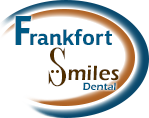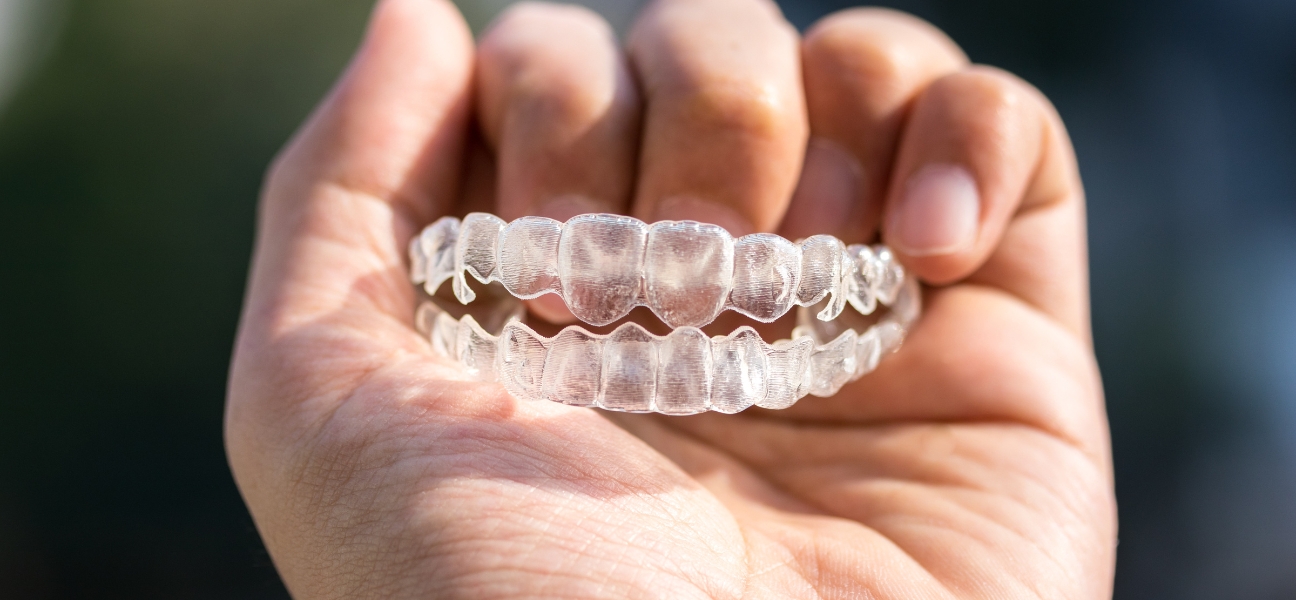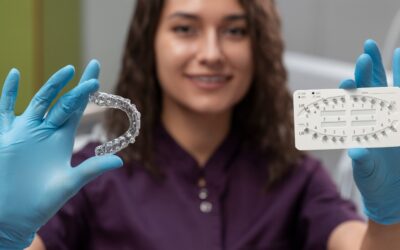Clear Invisalign represents a modern approach to teeth straightening that has transformed orthodontic treatment for millions of people worldwide. These transparent, removable aligners offer a discreet alternative to traditional metal braces while effectively correcting various dental alignment issues.
Clear Invisalign aligners are custom-made plastic trays that gradually shift your teeth into their desired positions through a series of incremental movements. The treatment process involves wearing each set of aligners for approximately two weeks before progressing to the next set in the series. You can remove the aligners for eating, drinking, brushing, and flossing, which provides significant lifestyle advantages over fixed braces.
Understanding the benefits, costs, and treatment process of clear Invisalign can help you make an informed decision about your orthodontic care. The technology has evolved significantly over the past 25 years and now addresses a wide range of alignment issues that were once only treatable with traditional braces.
Are you thinking about Invisalign? Start with a conversation at Frankfort Smiles Dental today!
Key Takeaways
- Clear Invisalign uses removable transparent aligners to gradually straighten teeth over time
- The treatment offers significant advantages in comfort and convenience compared to traditional braces
- Cost and accessibility vary based on individual treatment needs and insurance coverage options
What Is Clear Invisalign?

Clear Invisalign is a specific brand of transparent orthodontic aligners that gradually straighten teeth without traditional metal braces. Better known as simply Invisalign. The system uses custom-made removable trays that apply controlled pressure to move teeth into their desired positions over time.
Invisalign clear aligners are an advanced orthodontic solution that can help you achieve the smile you’ve always wanted. These plastic aligners are custom-made from SmartTrack material, providing comfort and effectiveness as they apply gentle pressure to your teeth. Unlike traditional types of braces, Invisalign clear aligners are much less noticeable, making them a popular choice for those seeking to straighten their teeth discreetly.
Overview of Invisalign Aligners
Invisalign aligners are clear, plastic trays made from medical-grade thermoplastic material. Each set of aligners is custom-designed to fit your teeth precisely using advanced 3D imaging technology.
You wear each set of aligners for approximately 1-2 weeks before progressing to the next set in your treatment series. The aligners are nearly invisible when worn, making them a popular choice for adults and teens who want discreet orthodontic treatment.
Key features of Invisalign include:
- Removable design for eating and cleaning
- Smooth plastic material that won’t irritate your gums
- Custom fit based on digital impressions of your teeth
- Gradual movement with each new aligner set
The treatment typically involves 12-48 aligner sets, depending on your specific case complexity. You must wear the aligners for 20-22 hours daily to achieve optimal results within the projected timeframe.
How Clear Aligners Work
Clear aligners work by applying gentle, consistent pressure to specific teeth at predetermined intervals. Each aligner moves your teeth approximately 0.25 millimeters during the wear period.
The process begins with digital scans that create a 3D model of your mouth. Your orthodontist uses this model to plan the exact movements needed for your teeth straightening journey.
Each aligner in your series is slightly different from the previous one. This progressive design ensures your teeth move gradually into their final positions without causing excessive discomfort.
The aligners use controlled force systems that target specific teeth during different treatment phases. Some aligners may include small tooth-colored attachments that help grip certain teeth for more complex movements.
Who Is Eligible for Invisalign Treatment
Invisalign treatment works best for mild to moderate orthodontic issues. Ideal candidates include those with crowded teeth, gaps between teeth, or minor bite problems.
You’re typically eligible if you have:
- Mild to moderate crowding
- Spacing issues between teeth
- Minor overbite or underbite
- Crossbite affecting a few teeth
Invisalign may not be suitable for severe orthodontic cases requiring significant tooth rotation or major bite corrections. Complex cases often require traditional braces with brackets and wires.
Age isn’t a limiting factor, but you must have the discipline to wear aligners consistently. Teenagers and adults who can commit to the daily wear schedule typically achieve the best results.
Your orthodontist will evaluate your specific case during a consultation to determine if Invisalign aligners can address your particular needs effectively.
Key Benefits of Clear Invisalign
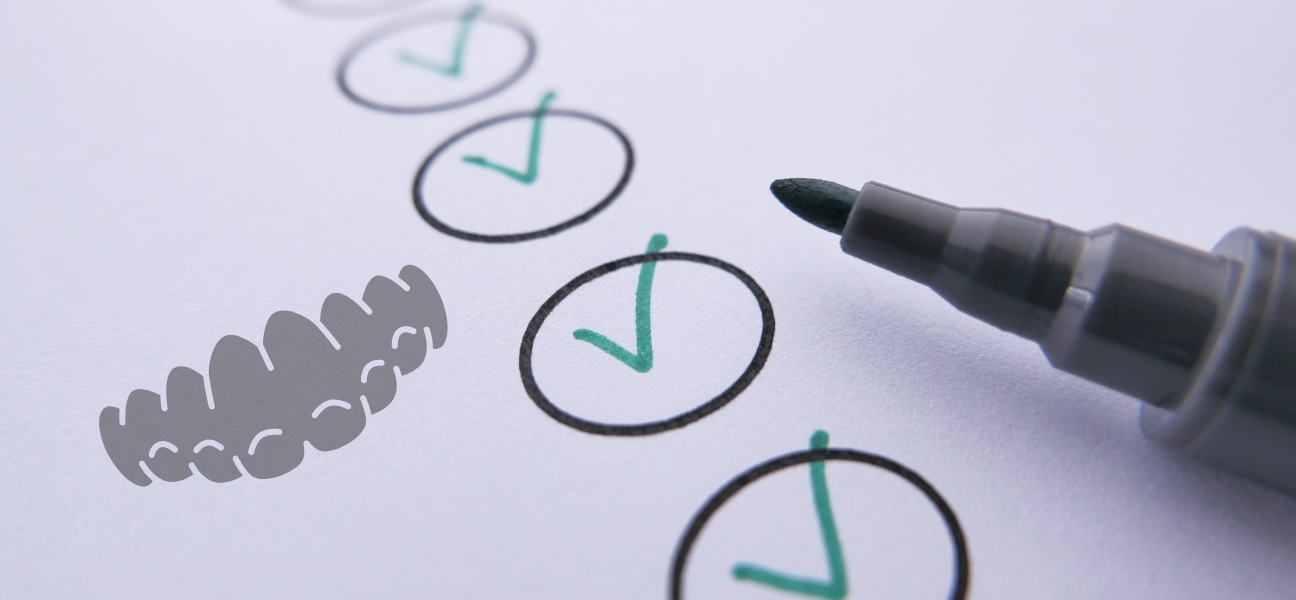
Clear Invisalign aligners provide significant advantages over traditional braces through their nearly invisible appearance, comfortable fit, and removable design. These benefits make teeth straightening more convenient and less disruptive to your daily routine.
Aesthetic and Comfort Advantages
Clear aligners are virtually invisible when worn, allowing you to straighten your teeth without anyone noticing. This discretion makes Invisalign treatment particularly appealing for adults and teens who want to avoid the conspicuous appearance of metal braces.
The aligners are custom-made to fit your dental structure precisely. This personalized fit eliminates the sharp edges and wires associated with traditional braces that can irritate your cheeks and gums.
Comfort features include:
- No metal brackets or wires
- Smooth plastic surfaces
- Custom fit for each patient
- Gradual tooth movement
Your confidence remains intact throughout treatment since the aligners blend seamlessly with your natural teeth. You can smile, speak, and interact normally without feeling self-conscious about your orthodontic treatment.
Treatment Efficiency and Results
Invisalign treatment typically requires fewer office visits compared to traditional braces. You’ll receive multiple sets of aligners at once, reducing the frequency of dental appointments and saving you time.
Treatment duration often proves shorter than conventional braces for many cases. The precise digital planning allows for more predictable tooth movement and efficient results.
Efficiency benefits:
- Fewer dental appointments
- Predictable treatment timeline
- Digital treatment planning
- Faster results in many cases
Your orthodontist can show you the expected final results using 3D imaging technology before treatment begins. This preview helps you understand the transformation process and sets realistic expectations for your straight teeth outcome.
Removability and Lifestyle Flexibility
You can remove Invisalign aligners for eating, drinking, brushing, and flossing. This removability eliminates dietary restrictions and makes maintaining oral hygiene significantly easier than with fixed braces.
Lifestyle advantages:
- Eat any foods without restrictions
- Brush and floss normally
- Remove for special occasions
- No food trapped in brackets
Your oral health remains easier to maintain since you can clean your teeth thoroughly without navigating around brackets and wires. This accessibility reduces the risk of cavities and gum disease during treatment.
The aligners must be worn 20-22 hours daily for optimal results. However, the ability to remove them for meals and social events provides flexibility that traditional braces cannot offer.
Comparing Clear Invisalign to Other Orthodontic Options
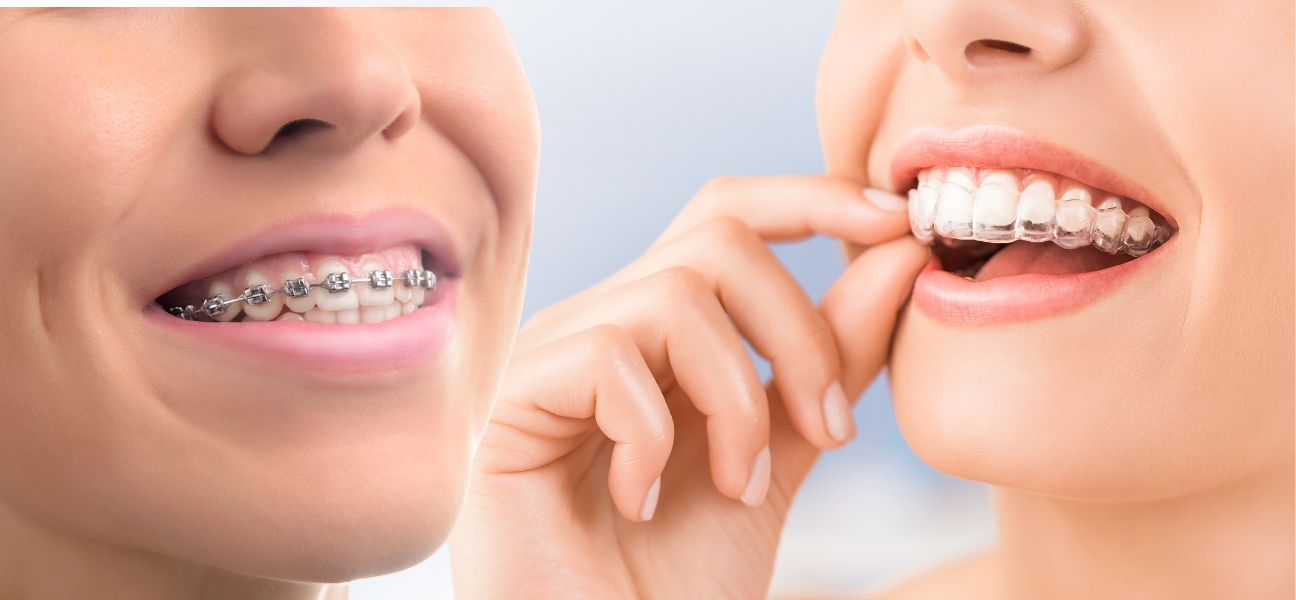
Clear Invisalign offers distinct advantages over traditional metal braces and competes with other clear aligner brands through advanced technology and comprehensive treatment supervision. Different age groups have varying needs that influence which orthodontic option works best.
Clear Aligners vs. Traditional Metal Braces
Clear aligners provide a nearly invisible treatment option compared to traditional metal braces. You can remove aligners for eating, brushing, and special occasions, while metal braces remain fixed throughout treatment.
Comfort and Convenience:
- Clear aligners cause less mouth irritation than metal brackets
- No dietary restrictions with removable aligners
- Easier oral hygiene maintenance
Treatment Effectiveness: Traditional metal braces handle complex orthodontic cases more effectively than clear aligners. Your orthodontist may recommend metal braces for severe crowding, significant bite issues, or rotated teeth.
Aesthetic Considerations: Clear aligners offer superior aesthetics for professional and social settings. Metal braces remain visible throughout treatment, which may concern adults and image-conscious teens.
Cost Comparison: Clear aligners typically cost more than traditional metal braces. Insurance coverage varies between treatment types, affecting your out-of-pocket expenses.
Invisalign vs. Other Clear Aligner Brands
Invisalign uses advanced 3D imaging technology and maintains comprehensive treatment oversight compared to other clear aligner systems. Your dentist or orthodontist conducts face-to-face assessments and digitally tracks your progress throughout treatment.
Treatment Supervision:
- Invisalign provides in-person monitoring
- Digital tracking ensures treatment accuracy
- Regular check-ups with your orthodontist
Alternative Brands: Other clear aligner brands like Byte and Candid emphasize faster treatment times. Smile Direct Club focuses on affordability and convenience but offers less professional supervision.
Technology and Quality: Invisalign’s established reputation stems from years of research and development. The system handles more complex cases than many competing brands.
Cost Differences: Invisalign often costs more than other clear aligner options due to comprehensive dental oversight and advanced technology. Budget-conscious patients may consider alternative brands with less supervision.
Considerations for Adults and Teens
Adult patients prioritize discretion and professional appearance, making clear aligners particularly appealing. You must wear aligners 20-22 hours daily, requiring significant commitment and discipline.
Adult Treatment Factors:
- Professional image concerns favor clear aligners
- Mature compliance with wearing requirements
- Ability to manage treatment independently
Teen-Specific Needs: Teenagers may struggle with aligner compliance and responsibility. Your orthodontist might recommend traditional metal braces for teens who forget to wear aligners consistently.
Lifestyle Impact: Clear aligners suit active lifestyles without sports restrictions. Metal braces require mouthguards during contact sports and may cause injury during physical activities.
Treatment Duration: Both options require similar treatment timeframes for comparable cases. Your specific orthodontic needs determine the actual treatment length regardless of the chosen method.
Cost and Accessibility of Clear Invisalign

Clear Invisalign treatment typically costs between $3,000 and $8,000, with multiple factors affecting the final price. Many dental insurance plans provide partial coverage, and flexible spending accounts can help reduce out-of-pocket expenses.
Treatment Costs and Pricing Factors
The average cost of Invisalign treatment ranges from $3,500 to $8,000. Your specific price depends on several key factors that your orthodontist will evaluate during your consultation.
Treatment complexity significantly impacts pricing. Simple cases requiring minor tooth movement cost less than complex orthodontic issues needing extensive correction.
Treatment duration directly affects your total cost. Longer treatment periods require more aligners and additional orthodontist visits, increasing expenses.
Geographic location influences pricing substantially. Urban areas and regions with higher living costs typically charge more for Invisalign treatment than rural locations.
Provider experience can affect costs. Specialized orthodontists may charge premium rates compared to general dentists offering Invisalign services.
Additional fees include initial consultations, X-rays, digital impressions, and follow-up appointments. Some practices bundle these services into package pricing, while others charge separately.
Insurance, FSA, and HSA Options
Most dental insurance plans classify Invisalign as orthodontic treatment. Standard orthodontic coverage typically covers 50% of treatment costs up to a lifetime maximum of $1,000 to $3,000.
Insurance eligibility varies by plan. Adult orthodontic coverage is less common than coverage for patients under 18 years old.
Flexible Spending Accounts (FSAs) allow you to pay for Invisalign treatment with pre-tax dollars. You can contribute up to $3,200 annually to your FSA for qualified medical expenses.
Health Savings Accounts (HSAs) also cover orthodontic treatment costs. HSAs offer triple tax advantages and unused funds roll over annually, making them ideal for planned orthodontic expenses.
Many orthodontist offices offer payment plans and financing options. These arrangements help spread treatment costs over 12 to 24 months with low or zero interest rates.
Getting Started with an Orthodontist or Dentist
Both orthodontists and dentists can provide Invisalign treatment. Orthodontists specialize exclusively in tooth movement and jaw alignment, while general dentists offer broader dental services.
Orthodontist consultation typically costs $100 to $300. During this visit, you’ll receive a comprehensive evaluation and treatment plan with exact pricing.
A dental evaluation may cost less initially. However, complex cases often require referral to an orthodontist for specialized care.
Schedule consultations with multiple providers to compare treatment approaches and costs. Ask about their Invisalign experience level and success rates with cases similar to yours.
Most practices offer free initial consultations or apply consultation fees toward your treatment cost. Bring your insurance information to determine coverage specifics and out-of-pocket expenses.
Steps to Achieving Real Results
To achieve optimal results, it is recommended to wear your aligners for at least 22 hours a day, ensuring that you only remove them to eat or drink. This consistent use of Invisalign is crucial in effectively moving your teeth into their desired positions. Throughout the treatment, you will receive a series of aligner trays, each designed to gradually shift your teeth into alignment, leading to a straighter smile.
Invisalign can be used to address various orthodontic issues, including crowding and spacing, overbites, and more, making it a versatile option for many patients. The process begins with a 3D scan of your teeth, which allows your dentist or orthodontist to create a personalized treatment plan tailored to your specific needs. This innovative technology is endorsed by the American Association of Orthodontists, ensuring you are receiving a proven method for achieving straighter teeth.
Choosing Invisalign also means considering the cost of treatment compared to traditional braces. While the cost of braces can vary, many find that the benefits of Invisalign, such as the ability to brush and floss your teeth normally and the comfort of wearing aligners made from advanced materials, outweigh the investment.
If you are wondering whether Invisalign is the right choice for you, schedule a consultation with a dentist or orthodontist in-network with most dental insurance plans. They can provide you with further information on how Invisalign works, the estimated length of your treatment, and how to maintain your aligners to prevent bacteria from growing throughout the process. Start your Invisalign journey towards a new smile today at Frankfort Smiles Dental!
Frequently Asked Questions: Clear Invisalign
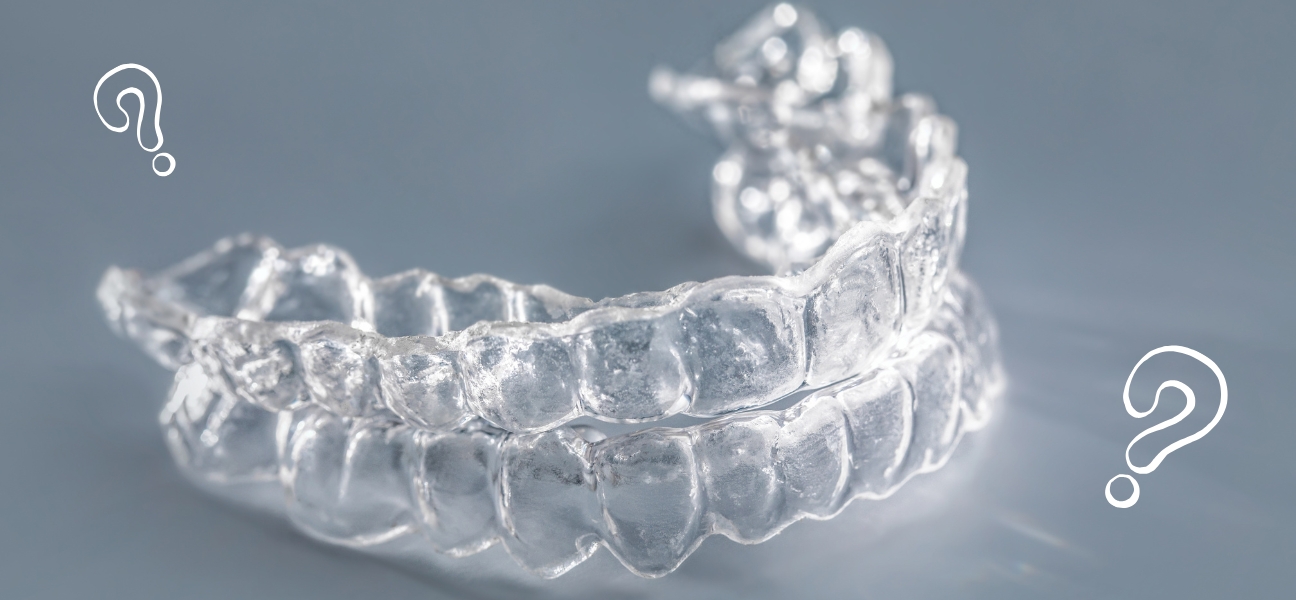
Clear aligner treatment raises practical questions about costs, effectiveness, and alternatives. Understanding these considerations helps you make informed decisions about orthodontic care.
What is the cost difference between Invisalign and traditional braces?
Invisalign typically costs between $3,000 and $8,000 for complete treatment. Traditional metal braces usually range from $2,500 to $6,000.
The price difference depends on your specific case complexity and treatment duration. More severe alignment issues may require longer treatment periods with either option.
Insurance coverage varies between providers, but often covers similar percentages for both treatments. Your dental insurance may classify both as orthodontic procedures with comparable benefits.
Payment plans are available through most orthodontic offices for both treatment types. Many practices offer monthly payment options to make treatment more affordable.
How do clear aligners compare to Invisalign in terms of effectiveness?
Invisalign uses proprietary SmartForce Technology to move teeth gradually through custom-made aligners. This system has extensive clinical research supporting its effectiveness for various orthodontic cases.
Other clear aligner brands use similar principles but may differ in materials and treatment planning software. The effectiveness often depends on the provider’s experience and your compliance with wearing schedules.
Treatment success requires wearing aligners 20-22 hours daily, regardless of the brand. Invisalign’s tracking system helps monitor progress throughout treatment.
Complex cases may be better suited for Invisalign due to its advanced treatment planning capabilities. Your orthodontist can determine which system works best for your specific needs.
Are there any notable alternatives to Invisalign for teeth straightening?
ClearCorrect offers another clear aligner option with similar treatment approaches. This system provides customized aligners made from durable plastic materials.
Traditional metal braces remain effective for complex orthodontic cases. They work well for severe crowding, significant bite corrections, and rotated teeth.
Ceramic braces provide a less visible option than metal while maintaining similar effectiveness. These braces use tooth-colored brackets that blend with your natural teeth.
Lingual braces attach to the back of your teeth for complete invisibility. This option requires specialized training and may take longer to adjust.
What are the pros and cons of clear braces versus Invisalign?
Clear braces stay attached to your teeth throughout treatment, eliminating compliance concerns. They work continuously without requiring you to remember to wear them.
Invisalign aligners are removable, allowing normal eating and easier cleaning. You can remove them for special occasions or important meetings.
Clear braces may cause more discomfort initially and require dietary restrictions. Hard or sticky foods can damage the brackets and wires.
Invisalign requires discipline to wear aligners for the recommended 20-22 hours daily. Treatment effectiveness depends entirely on your commitment to the wearing schedule.
How often do dentists recommend the use of clear aligners?
General dentists increasingly recommend clear aligners for mild to moderate orthodontic cases. Many patients prefer the aesthetic appeal and convenience of removable aligners.
Orthodontists evaluate each case individually to determine the best treatment approach. Clear aligners work well for spacing issues, mild crowding, and minor bite corrections.
Complex cases still benefit from traditional braces or specialized orthodontic appliances. Severe rotations, significant bite problems, or jaw alignment issues may require fixed appliances.
Patient lifestyle and preferences influence treatment recommendations. Active adults and professionals often prefer clear aligners for their discretion and removability.
What distinguishes SmileDirectClub from Invisalign in clear teeth aligning solutions?
SmileDirectClub operates through remote monitoring without regular in-person visits. You take impressions at home or visit a retail location for initial scans.
Invisalign requires supervision by licensed dentists or orthodontists throughout treatment. Regular appointments allow for progress monitoring and adjustments as needed.
Treatment complexity differs significantly between the two options. SmileDirectClub focuses on cosmetic improvements for front teeth alignment.
Invisalign addresses more comprehensive orthodontic issues, including bite corrections. Licensed professionals can handle complex cases requiring specialized attention and expertise.
